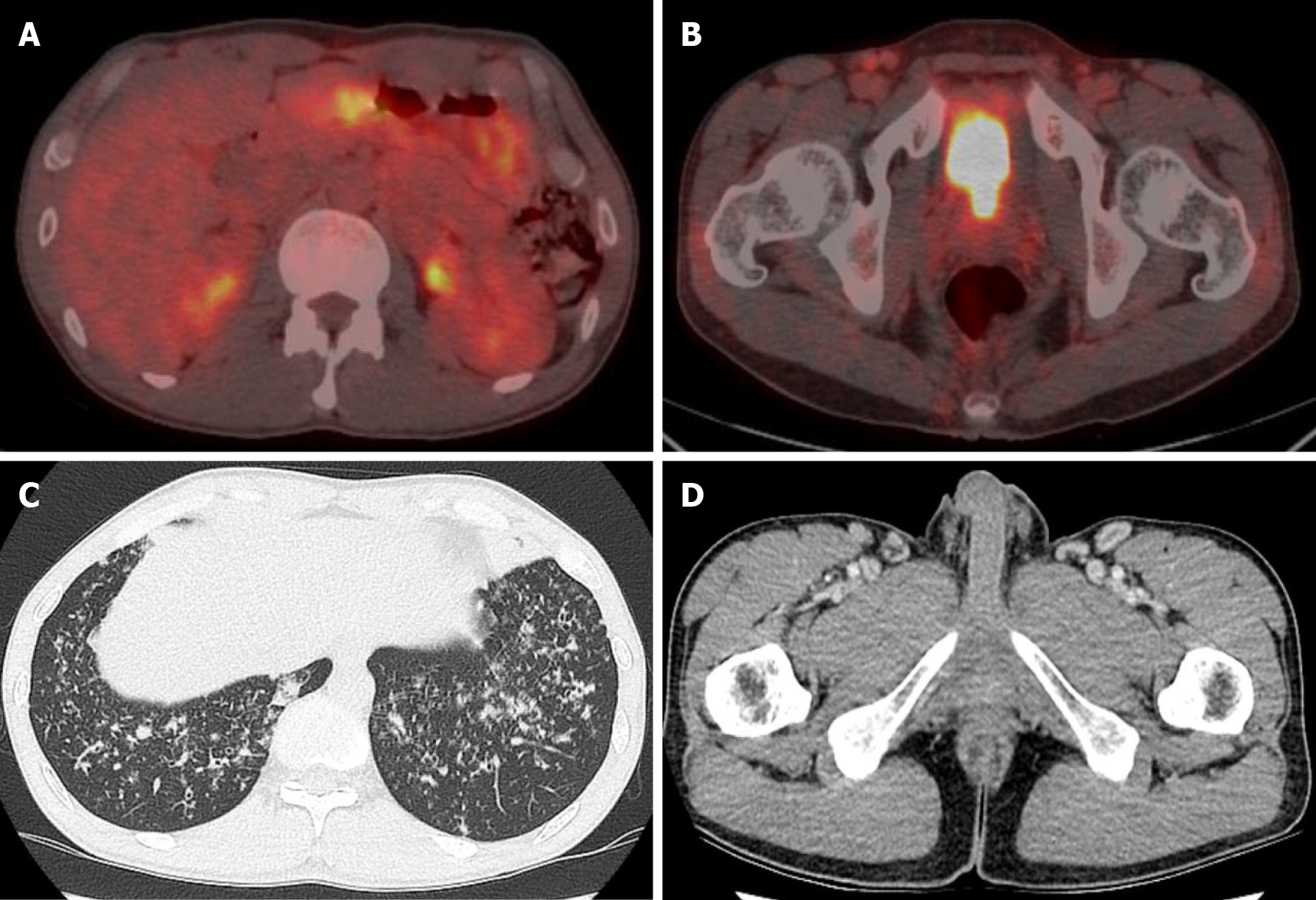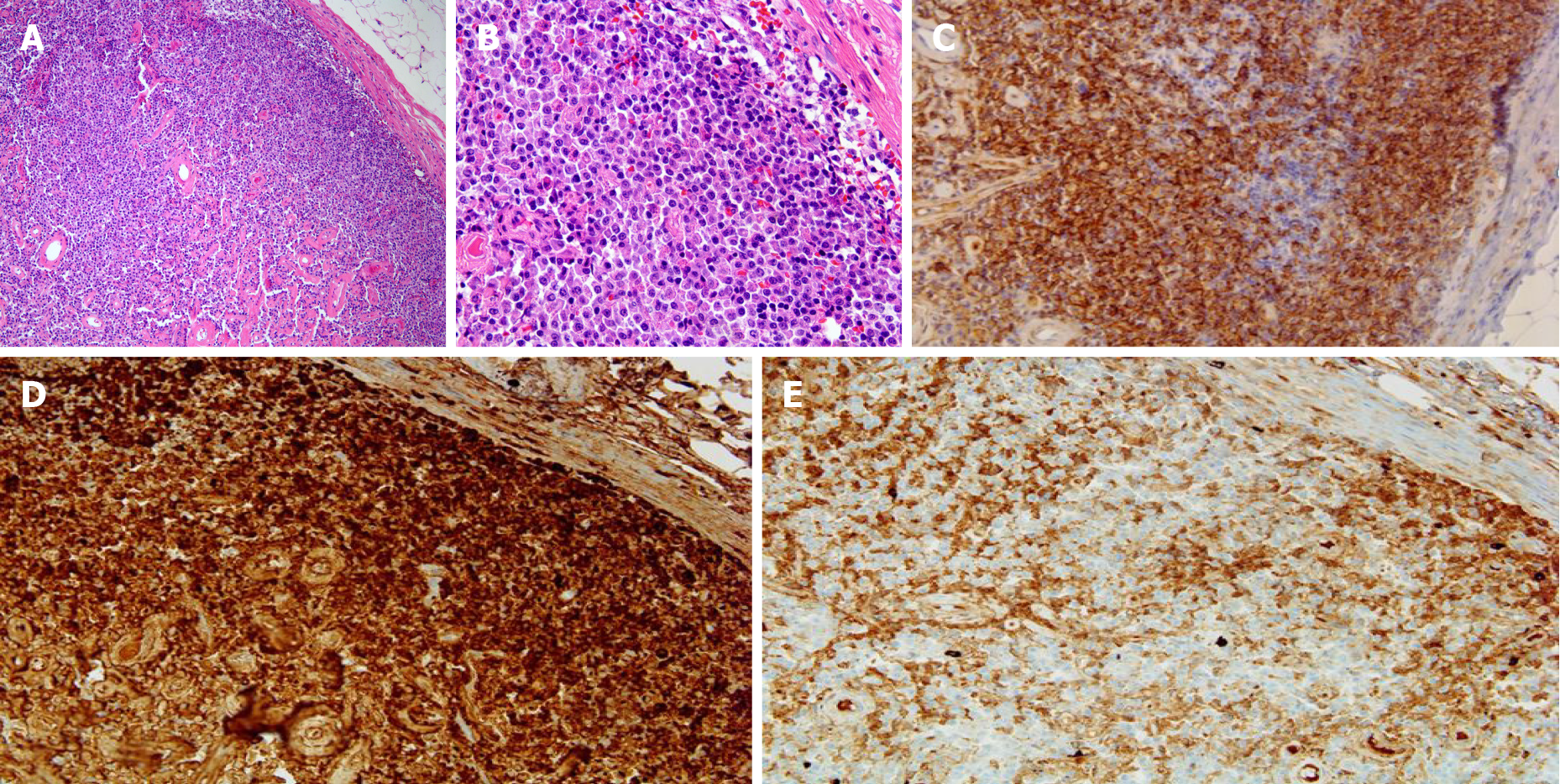Copyright
©The Author(s) 2022.
World J Clin Cases. Jan 21, 2022; 10(3): 1016-1023
Published online Jan 21, 2022. doi: 10.12998/wjcc.v10.i3.1016
Published online Jan 21, 2022. doi: 10.12998/wjcc.v10.i3.1016
Figure 1 The positron emission tomography scan, chest computed tomography, and abdominal computed tomography.
A and B: Diffuse hypermetabolic activity in the gastric body and mild increased metabolic activity in both inguinal areas found on an axial view of the positron emission tomography scan; C: In the axial view of the chest computed tomography (CT), ground glass opacities and centrilobular nodules were found in both lung fields; D: Abdominal CT showing multiple enlarged lymph nodes in the bilateral inguinal area.
Figure 2 A gastroscopic biopsy of the stomach lesion.
A: In mid power field, dense, monotonous infiltrate of plasma cells in lamina propria are noted; B: In high power field, plasma cells vary from mature to binucleated (black arrow); C-E: Plasma cells show immunoreactivity to CD138 and a Kappa restricted monoclonal pattern (kappa: lambda ≥ 20:1) which is consistent with plasmacyotma.
Figure 3 Biopsy of the right inguinal lymph node.
A: In mid power field, dense, monotonous infiltrate of tumor cells which efface nodal architecture are noted; B: In high power field, tumor cells are composed of mature plasma cells; C-E: Plasma cells show immunoreactivity to CD138 and a Kappa restricted monoclonal pattern (kappa: lambda ≥ 20:1), consistent with plasmacyotma.
Figure 4 Video-assisted thoracoscopic surgery was performed for lung biopsy.
A: In low power field, deposition of amorphous proteinaceous material deposition with multinucleated giant cells are noted in interstitium and perivascular area; B: In high power field, infiltrations of lymphoplasmacytes are noted; C-E: Areas of lymphoplasmacytic infiltration show focal immunoreactivity to CD138. However, immunoreactivity of kappa and lambda light chain reveals no definite restricted pattern.
- Citation: Kim J, Kim YS, Lee HJ, Park SG. Pulmonary amyloidosis and multiple myeloma mimicking lymphoma in a patient with Sjogren’s syndrome: A case report. World J Clin Cases 2022; 10(3): 1016-1023
- URL: https://www.wjgnet.com/2307-8960/full/v10/i3/1016.htm
- DOI: https://dx.doi.org/10.12998/wjcc.v10.i3.1016












